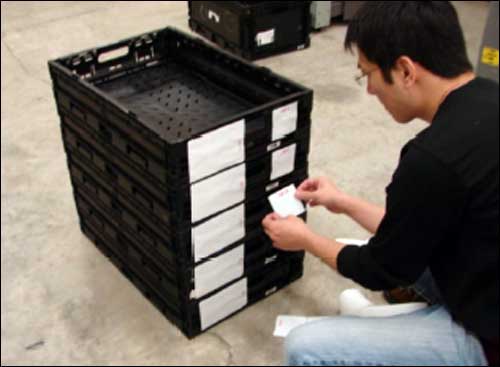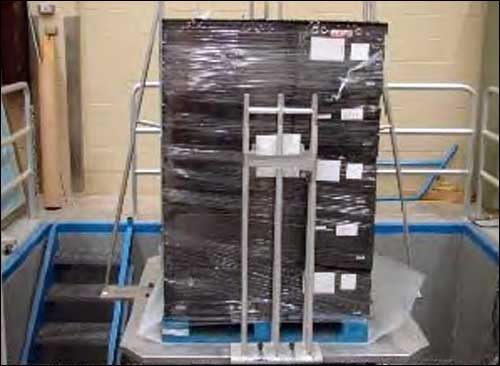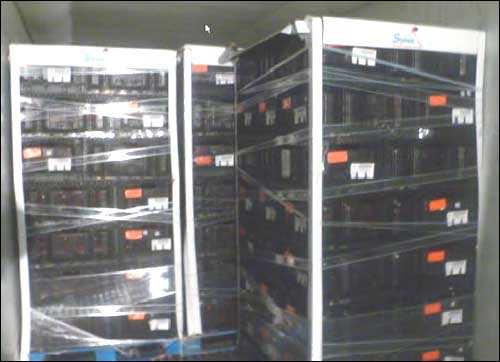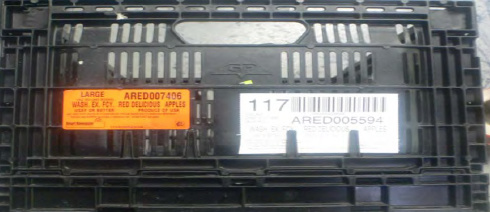A study conducted by the Reusable Packaging Association (RPA), an industry group focused on promoting the use of reusable packaging, has found that radio frequency identification tags designed to be disposed of after a single use can be used multiple times and still perform properly on reusable containers.
The study, performed for the RPA by RFID research firm QLM Consulting, used standard ultrahigh-frequency (UHF) RFID adhesive labels based on EPCglobal‘s Gen 2 standard. The tags were read more than 5,000 times on containers and pallets shipped from a farm to a distribution center (DC) 1,000 miles away. The tags were read accurately within three seconds after two trips, 109 out of 110 times.
QLM subjected the tags to vibration and shock in a lab setting, then tagged plastic containers loaded with produce and shipped them to a Wal-Mart DC. While many tags were tested, the highest-performing were three Gen 2 tags manufactured by Alien Technology, UPM Raflatac and Avery Dennison.
The study was launched approximately two years ago, says Jerry Welcome, RPA’s president and CEO, because the group’s members—particularly those in the produce market—were interested in using RFID to track shipments. That interest, in part, was fueled by Wal-Mart’s drive to track pallets and cartons tagged by its suppliers. Wal-Mart often receives its produce in reusable containers, Welcome says, making a study of the reuse of RFID tags on such containers that much more desirable for produce shippers.
The study consisted of three phases. In phase one, researchers at Michigan State University‘s School of Packaging tested the readability of four RFID tags placed containers and pallets. The tagged objects were subject to vibration and drop tests, with a total of about 7,300 reads.
In the second phase, researchers stacked the containers used in phase one on pallets, stretch-wrapped the pallets and shipped them to the Willoughby, Ohio, testing facility of The Kennedy Group, where California State Polytechnic researchers read each tag using a Motorola handheld interrogator.
In the third phase, the containers were loaded with lettuce picked at a Frontera Produce farm in Edinburg, Texas; apples picked at a Stemilt Growers orchard in Wenatchee, Wa.; and peppers at a Tanimura and Antle farm in Salinas, Calif.
Researchers selected a produce industry application for two reasons, Welcome says. First, RFID can deliver more benefits to produce shippers than other shippers, due to the short shelf life of produce. RPA also felt that a produce study would provide a rigorous shipping environment in which tags can be expected to experience wide temperature fluctuations, as well as wet and dry conditions.
The researchers chose lettuce, in particular, because of its high water content, as well as the potential of water to absorb RF energy and affect tag performance. “We wanted to determine if there would be any degradation in radio signal strength,” Welcome states. The apples and peppers were selected to determine whether seeds, pits or shape might affect tag performance.
In all three cases, produce was loaded in reusable plastic containers (RPCs) from Georgia Pacific, IFCO Systems and ORBIS Container Corp. The produce was then sent to cooling facilities, loaded on trucks and shipped to a Wal-Mart DC in Cleburne, Texas.
The tags were read with Alien Technology and Impinj fixed interrogators, using Alien antennas at the RPC service center set up at the grower locations, at the distribution center and again upon return to the service center. After returning empty from the retailer, the containers were washed, stacked and transported back to the field to be reused and tested a second time. QLM employed Alien and Impinj software to record all read data on Excel spreadsheets, and all RFID tags, interrogators, antennas and hardware used were commercially available products.
The study was completed in November of last year, and the six months following were dedicated to data collection and peer review of the results. “Our objective was to sponsor a thorough and scientific study,” Welcome says. Although the tags were tested through only two shipping cycles, he notes, “we think it demonstrates that the capability of reusing the tags is there.”
The study did not determine just how long the tags could be expected to last, however. “One would hope you would get at least 40 turns on a crate,” Welcome says. “We demonstrated that reusing them is possible.”
The tags could typically be applied to containers with an adhesive. According to Welcome, the study proves that the tags can withstand the rigors of produce shipping, such as washing and temperature changes. The study is available to RPA members, he says, but may also become available to others for purchase. Interested buyers should contact Welcome through the RPA Web site.





